Guide to Investing in Your 20s & 30s: Building a Strong Retirement Portfolio
Investing wisely is crucial for young adults aiming to secure their financial future. Starting early can significantly amplify the power of compounding and help achieve retirement goals confidently. Consider the following example:
Starting Early vs. Starting Late
Let’s compare two saving strategies: "Start Early" saves $10,000/year for the first 10 years of employment and then stops, benefiting from compounding. "Start Late" begins saving after 10 years of employment, saving $10,000/year for 30 years. As the chart below illustrates, the "Start Early" strategy, leveraging compounding, yields greater wealth over 40 years.
In addition to determining when to start saving for retirement, here are a few other factors to consider:
- Goals and Risk Appetite: Define your financial objectives and comfort level with risk. Younger investors often have the advantage of time, allowing for more aggressive strategies.
- Diversification: Spread investments across asset classes (stocks, bonds, real estate) and within each class (various industries, geographies, company sizes) to minimize risk.
- Stocks: Focus on growth opportunities in sectors like technology, renewable energy, and healthcare. Choose companies with strong financials, manageable debt levels, and consistent revenue growth.
- Bonds: Seek stability and income. Government bonds offer security, while corporate bonds provide higher yields with added risk. Consider the bond’s credit ratings for risk management.
- ETFs and Mutual Funds: Opt for diversified exposure through exchange-traded funds (ETFs) and mutual funds with strong performance history and low expenses.
- Tax-Advantaged Accounts: Maximize contributions to 401(k)s and Roth IRAs for tax benefits and accelerated savings growth.
- Monitoring and Adjustment: Regularly review and adjust your portfolio to align with goals and risk tolerance.
- Market Insights: Stay informed about market trends and economic indicators for informed decision-making.
- Long-Term Commitment: Patience and consistency are key to successful retirement investing. Avoid reacting impulsively to short-term market movements.
Conclusion
Building a robust retirement portfolio requires strategic planning and disciplined execution. Start investing early, diversify intelligently, and stay informed to achieve financial security and pursue retirement dreams confidently.
For personalized guidance, consider a complimentary, no-obligation consultation with Fairlane Investment Advisors to optimize your investment approach.

